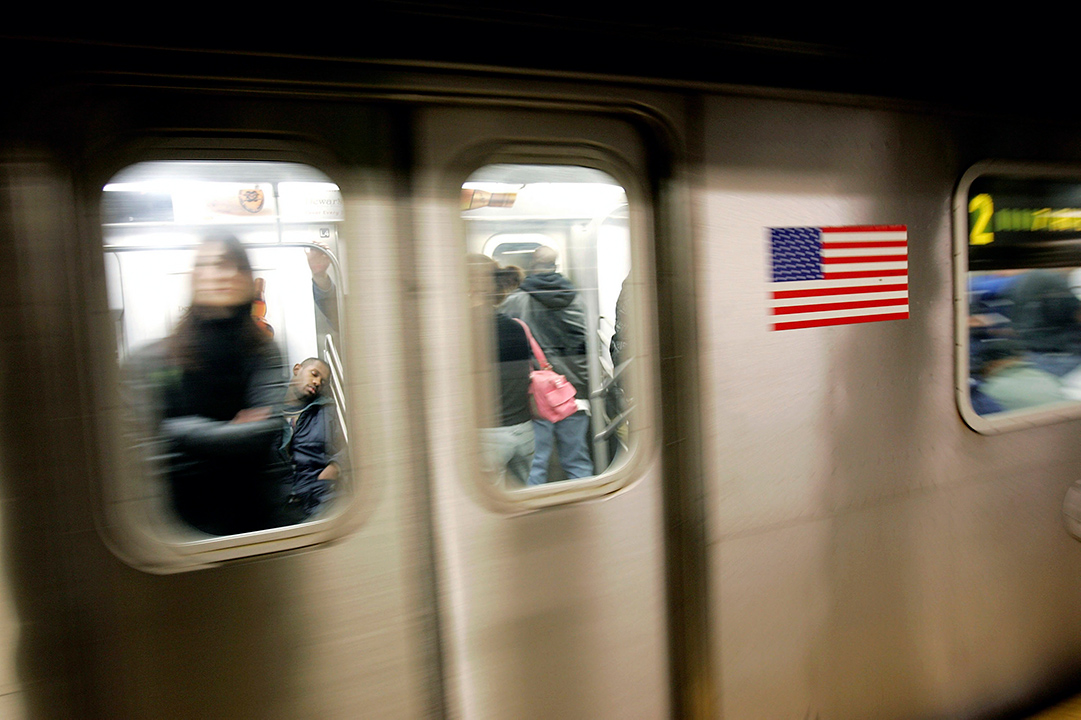In a political climate that increasingly confuses peaceful protest with smashing things up, the state-controlled Metropolitan Transportation Authority is trying a novel strategy to put vandals and graffiti scrawlers on notice: Vandalism is not a victimless crime.
The pandemic has caused the worst crisis of the MTA’s 53-year-old existence, decimating ridership. Add to the pandemic a man-made problem: The criminal-justice system has given up meting out criminal justice. Last year, fare-beating arrests were down 84 percent; summonses (more like a civil traffic ticket), down 61 percent.
Surprise: Violent crime jumped underground, with murder doubling (to six) and robbery up 4 percent. A week rarely goes by without an assault on a transit worker. New York will have to relearn the lesson: We can prevent these big crimes by preventing small crimes.
The MTA is beleaguered by those, too. In just one August week, a person or people smashed 104 train windows.
One such small-time nihilist is Calvin Williams, 55, who allegedly entered midtown and downtown Manhattan subway stations four separate times in November and December, with the sole purpose of destroying the MTA’s new-ish electronic information boards, 18 in total.
In a different era, a high-profile police presence at Herald Square or the World Trade Center, two of his targets, would have deterred Williams. Like many people using transit for something other than transit, he allegedly entered the subway without paying.
Thanks to camera footage, the NYPD did arrest Williams for the alleged November property destruction. Thanks to bail “reform,” he was let loose right away. Even before the November crime spree, he was facing separate earlier charges for alleged drug sales and assault. Now, arrested after the December transit spree, he’s in jail — only because of a robbery charge.
How is the MTA ever going to get its customers back, when no one will keep the system safe, and when straphangers are greeted with graffiti at entrances and smashed property inside, hardly signs that anyone cares?
Pat Foye, the MTA boss, has an idea: sue. The MTA has filed a civil case against Williams, demanding $100,489.75, for parts and labor for replacement screens, as well as $13.25 for entering stations without paying the fare.
A cynical observer might observe that Williams seems unlikely to have $100,489.75 sitting around. “We’re obviously aware that many of the people who do this are not going to have any assets,” Foye says.
As for whether a six-figure default judgment could keep Williams from getting his life back on track someday, Foye suggests that perhaps the nonprofits that raise money to bail people out of jail could clear these debts, too.
But “from the point of the MTA, we don’t want our property damaged. . . . The victims are tens of thousands who could be injured, customers and employees.”
Plus, some would-be vandals will be deterred by a financial cost: “We will encounter some trust-fund vandals, who may have to clean this up before they take fancy jobs.”
It’s hard to remember now, but a year ago, last January, a mob of agitators went on a “decolonize-this-place” protest spree across the MTA, destroying screens and OMNY readers and gumming up machines. It was an eerie prelude to the summer, when hundreds of Manhattan stores suffered similar property damage.
For the moment, organized rioters seem uninterested in transit. They are working at home, and so, out of sight, out of mind. But when attention wanders back, the MTA doesn’t plan to fall victim to property destruction as “peaceful” protest.
In a “defund” world, New York’s court system may let vandals off with a dismissed misdemeanor, but a bill that rivals a burn-the-place-down anarchist’s student-loan tab will keep mommy and daddy’s attention.
“It’s relatively cheap for us to do this,” says Foye. “We can do it with in-house counsel. . . . We’re going to do everything we can on the civil side.”
The average victim of a property crime, or even a more violent crime, can’t do much but hope someone with power is vaguely interested in achieving justice and deterrence for future victims. But the MTA can be a powerful victim.
This piece originally appeared at the New York Post
______________________
Nicole Gelinas is a senior fellow at the Manhattan Institute and contributing editor at City Journal. Follow her on Twitter here.
This piece originally appeared in New York Post
